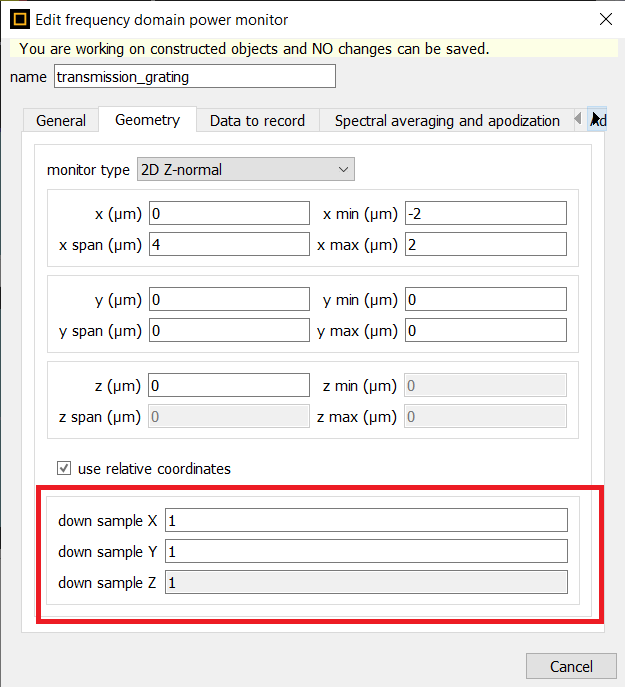Ansys Learning Forum › Forums › Discuss Simulation › Photonics › x-y metalgrid of solar cell in CHARGE › Reply To: x-y metalgrid of solar cell in CHARGE
Hi Handon,
Good to see you too. Thanks for sharing more information, it's much clearer to me now. So you are correct we would need to do a 3D FDTD and 3D CHARGE simulation. There are a few things we can do to reduce the computational requirements. I will start with FDTD. I don't work on CHARGE a lot, so I will get my colleague's input on that side and come back with more information.
When it comes to FDTD, the most straightforward thing you can do of course is 1. reduce the mesh size. But that will definitely affect the accuracy of the simulation. In some cases, we might not require a high mesh density but it will be hard to predict that and will depend upon the specific use case. What I can suggest you to do is use a "Uniform Mesh" (as opposed to the default auto non-uniform), make the mesh coarser and compare the results to the default mesh of diffrent accuracies. If there is not a lot of difference in the results, you should be good to use the uniform mesh with a lower resolution. 2. I think you should use the symmetric and anti-symmetric BCs here. With this you can reduce the simulation domain by half or quarter depending upong whether you use them in one transverse direction or both. Please have a look: Symmetric and anti-symmetric BCs in FDTD and MODE. 3. You can also downsize the data collection of the monitors to reduce the hardware requirements. As shown below:
Increasing this number will reduce the number of points where the data is collected in each direction by that factor.
Regards,
Amrita


